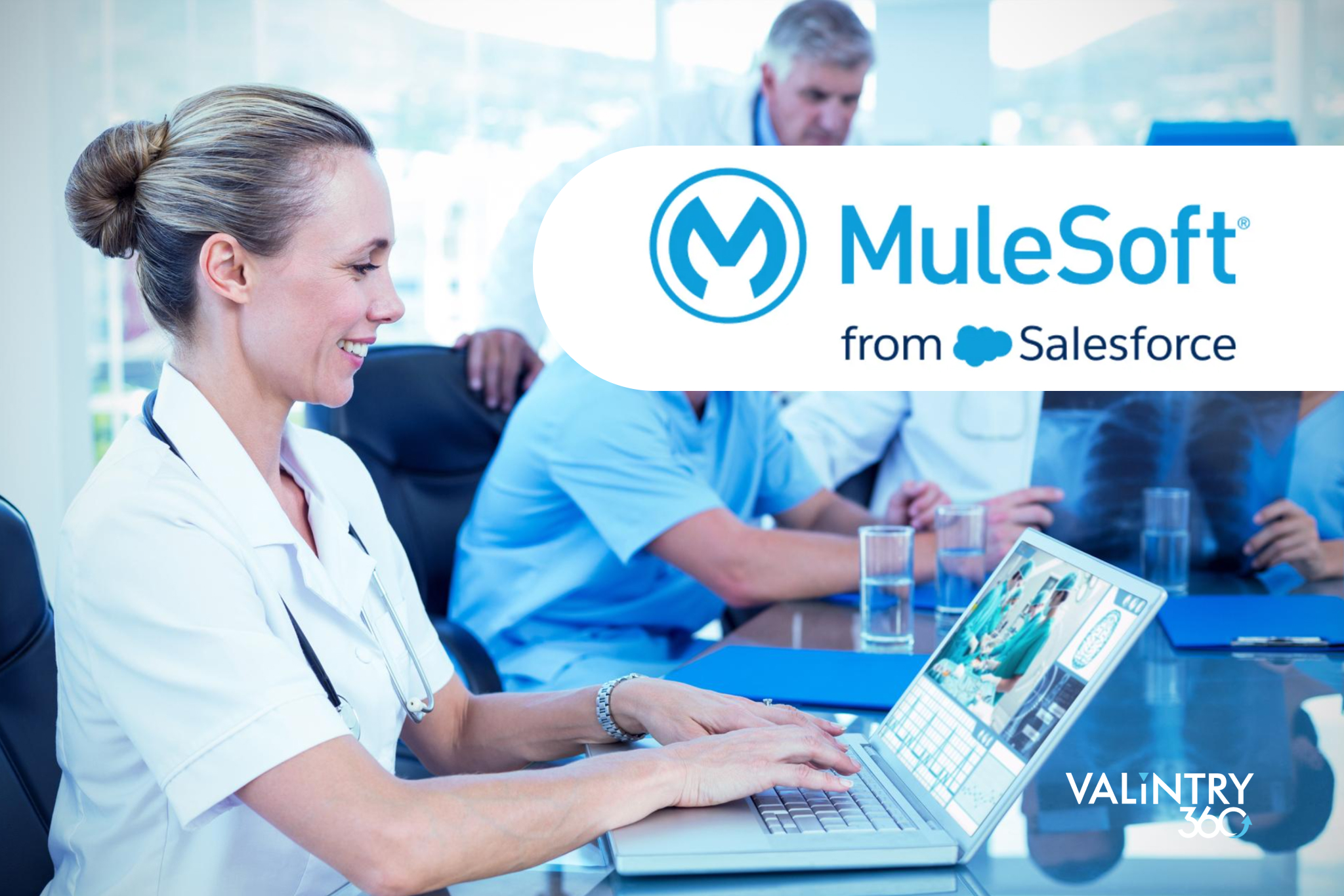
- EHR/EMR
In today’s fast-paced healthcare environment, patient care is paramount. As Electronic Health Record (EHR) systems are becoming more and more complicated, healthcare providers have come across many challenges to providing fast and efficient care. Nevertheless, combining Salesforce Mulesoft (an advanced integration platform) with an EHR provides healthcare organizations with the ability to streamline their patient care.
Table of Content
The Role of Salesforce Mulesoft Integration in Healthcare
Enhanced Data Connectivity
Optimized Patient Experience
Empowering Decision-Making with Insights
Considerations and Challenges

Privacy and Data Security
While the benefits of Salesforce MuleSoft integration are substantial, healthcare organizations must prioritize privacy and data security. With sensitive patient information being exchanged across integrated systems, robust security measures must be in place to safeguard against unauthorized access, breaches, and data misuse. Compliance with regulations such as HIPAA is non-negotiable in ensuring patient confidentiality and trust.
Implementation Challenges
Another consideration in Salesforce MuleSoft integration is the complexity of implementation. Healthcare systems are usually very specialized and complicated, so it is hard and time-consuming to achieve the integration. Nevertheless, good planning, strong stakeholder engagement, and cooperation with experienced integration experts like VALiNTRY360 will make the obstacles more easily managed and will help to successfully achieve the objectives.
Benefits of Salesforce Mulesoft Integration in Healthcare

Patient 360
One of the key advantages of Salesforce MuleSoft integration is that it facilitates the formation of a complete picture of a patient or “Patient 360”. This all-encompassing snapshot consists of all principal details of health, such as medical history, diagnoses, prescriptions, lab results, and similar. Patient 360, in addition to the healthcare staff and professionals, ensures the provision of more precisely tailored and coordinated care, all of which eventually translates into better health outcomes for the patients.
Scheduling
Salesforce MuleSoft integration streamlines scheduling processes by synchronizing appointment data across various systems. It guarantees that the schedule is effective and there are no double bookings, thus eliminating waiting time, and maximizing the resources of the company. Proponents of telehealth underline the fact of quick access to health care for patients plus the ability for health providers to be effective during their working hours, thus increasing the level of productivity and revenue.
Active Referral Management
Effective referral management is essential for coordinating care across different healthcare providers and specialties. Salesforce Mulesoft integration facilitates seamless referral workflows, ensuring that referrals are promptly processed, tracked, and followed up on. This results in improved care coordination, reduced referral leakage, and enhanced patient satisfaction.
Intake, Admit, and/or Registration
Efficient intake, admission, and registration processes are critical for ensuring a smooth patient experience from the moment they enter the healthcare facility. Salesforce MuleSoft integration automates these processes, allowing for seamless data capture, verification, and transfer across systems. This minimizes paperwork, reduces errors, and accelerates the onboarding process, leading to greater patient satisfaction.
Aftercare and/or Post Discharge
Continuity of care extends beyond the hospital or clinic setting, encompassing aftercare and post-discharge support. Salesforce Mulesoft integration bridges the gaps in communication between the healthcare providers as the patients are transferred from inpatient to outpatient services, and therefore, the follow-up appointments, medications, and instructions are passed seamlessly. The tool lessens the probability of readmissions and facilitates superior long-term health outcomes.
End-to-End Journey Management
Salesforce Mulesoft integration facilitates end-to-end journey management, encompassing the entire patient care continuum. From initial contact through treatment, follow-up, and ongoing management, patient data flows seamlessly across systems, enabling a holistic approach to care delivery. This results in improved care coordination, enhanced patient engagement, and ultimately, better outcomes.
Demographic Updates
Keeping patient demographic information up-to-date is essential for effective care delivery and billing accuracy. Salesforce MuleSoft integration automates the process of updating patient demographics across systems, ensuring that records are always accurate and current. This reduces administrative burden, minimizes errors, and improves overall data quality.
Challenges and Solutions
While the benefits of Salesforce MuleSoft integration are clear, healthcare organizations may encounter challenges along the way. These difficulties can encompass technical complexities, resistance to change, data migration problems, and resource constraints. Nevertheless, through proactive planning, stakeholder involvement, and the support of experienced integration agents these challenges can be resolved effectively and pave the way for implementation and adoption.
Future Trends and Considerations
Moving forward, healthcare convergence seems to be likely. Trends like interoperability, telehealth, and patient engagement are the immediate next steps. Salesforce Mulesoft is rather advantageously situated to support these patterns, providing the flexibility, scalability, and interconnection required to adapt to constantly altering healthcare market situations. Being aware, and ready to accept new innovations will be necessary for healthcare organizations to keep improving patient care and outcomes.
Conclusion
In conclusion, Salesforce MuleSoft integration holds tremendous potential for boosting patient care in EHR systems. By enhancing data connectivity, optimizing the patient experience, and empowering decision-making with insights, MuleSoft enables healthcare organizations to deliver more personalized, coordinated, and effective care. While challenges exist, proactive planning, stakeholder engagement, and the support of experienced integration partners like Valintry360 can help overcome these hurdles, unlocking the full benefits of integrated healthcare. As we look to the future, embracing emerging trends and technologies will be key to driving continuous improvement in patient care delivery and outcomes.
Related Posts
- Digital Transformation
- EHR/EMR
- Health Cloud Solutions
- Healthcare and Life Sciences
- Patient Management Software
Streamlining Referrals with VALiNTRY360’s “Connect” Offering
VALiNTRY360’s "Connect" platform is designed to simplify patient referrals and ensure seamless care continuity. Its powerful features address common challenges in managing patient handoffs between providers. Patient Information Management in "Connect" securely stores patient profiles, history, and treatment details, making…
- EHR/EMR
Maximizing Efficiency: How Salesforce Streamlines EHR Processes
In today's fast-paced healthcare landscape, maximizing efficiency is not just desirable it's essential for providing optimal patient care and maintaining organizational effectiveness. One of the key tools in achieving this efficiency is through streamlining the use of Electronic Health Records…
- EHR/EMR
Reasons to Integrate Your EHR/EMR with Salesforce
In today's dynamic healthcare landscape, integrating Electronic Health Records (EHR) or Electronic Medical Records (EMR) systems with Salesforce has become increasingly important. Healthcare systems integration creates advantages both for healthcare organizations and patients. Here, we’ll discuss the impact of integrating…

